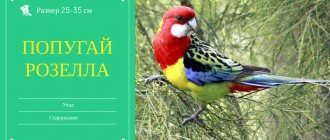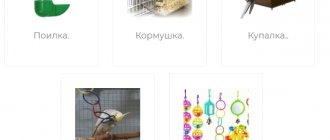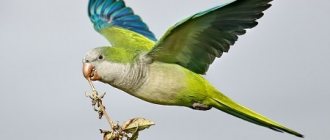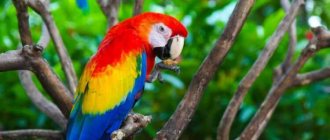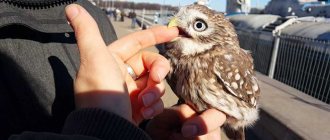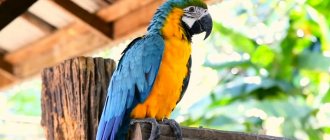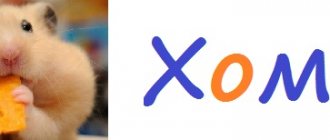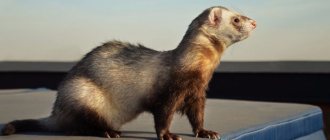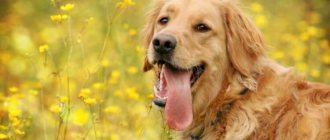The most spectacular macaw parrot in the world deserves an excellent rating: the most beautiful, smartest, rarest, most expensive and largest of the representatives of the parrot family. The elite bird is protected by law, while several species are endangered, and the blue macaw lives and breeds only in captivity. The article contains basic information about the noble macaw parrot: where it lives and what it looks like, why it is interesting and whether it is possible to keep an exotic pet at home.
Hyacinth macaw
Appearance
The Ara parrot is brightness, contrast, multicolor. The classification of birds is based on color features. The plumage of these beautiful parrots contains the richest shades: yellow, red, blue, green. Only the macaw does not have white and black as its main colors. These colors are occasionally present on the body of birds: on the facial mask, chin, crown of the head, and in patterns on the cheeks.
In addition to the beauty of its plumage, the macaw is famous for its large size. There are giant individuals, such as the red macaw, the green-winged macaw, and the hyacinth macaw. They grow up to a meter in length and weigh 1.5 kg. The wide wingspan and long stepped tail make the bird look simply incredible. There are also small varieties: dwarf or “mini” macaws (blue-fronted, soldier, yellow-necked). They also deserve attention, although not so grandiose.
Red Macaw
Other features of the macaw parrot:
- large beak with a sharp tip, rounded and laterally compressed;
- unfeathered areas of skin between the beak and eyes;
- highly elongated wings, reaching a span of 80 cm.
You can admire the colorful appearance of the gorgeous bird in the photo.
Possible diseases
With proper care and a balanced diet, Macaw parrots rarely get sick. Among the diseases to which they are still susceptible are the following:
- Infectious pathologies caused by viruses, bacteria or fungi.
- Ornithosis (infectious disease).
- Allergic reactions.
- Papillomas, lipomas.
- Urinary tract diseases.
- Toxicosis.
With insufficient attention, lack of water treatments or sexual distress, birds may begin to pluck their own feathers or begin to chew each other's feathers. Parrots may also experience beak deformation.
If painful signs appear, the bird should be shown to a veterinarian to establish a diagnosis and prescribe treatment.
Symptoms of the disease in parrots:
- refusal to eat;
- disheveled;
- apathy, decreased activity;
- wings lowered to the bottom;
- sagging skin;
- unexplained mood swings;
- discharge from the eyes;
- swollen eyelids;
- beak gnashing;
- interrupted breathing;
- hypersalivation (increased salivation);
- stool changes.
Habitat
The macaw parrot lives in South America: the northern and central parts of the continent, in the Amazon River basin, on the west coast and in the foothills of the Andes. Each species has its own habitat: some parrots live in the tropics, others in humid equatorial forests, and others in mountainous areas. Some representatives of the genus Ara prefer dry steppe areas or cool ocean coasts.
Taking care of the beak
A parrot's powerful beak grows throughout its life. To prevent it from being too long, you need to provide the bird with the opportunity to grind it down on its own.
To do this, hang a piece of chalk in the cage, install perches and snags from tree branches, and offer the bird small pebbles and shell rock as mineral supplements.
How to keep a macaw parrot?
Also, the cause of excessive beak growth may be an incorrectly formulated diet. It should contain solid food: grain mixture and nuts.
If the pet cannot maintain the optimal length and has difficulty absorbing food, you need to file the beak with a file or file.
Pre-wash and disinfect instruments. It is necessary to accustom your pet to the procedure from chick age, otherwise you will have to resort to brute force and additional help.
The cause of the systematic appearance of a growth on the beak can be infections and parasites. In this situation, specialist advice will be required.
Character and behavior
In nature, macaws lead a gregarious lifestyle. There is no leader within the group, but there are separate married couples. A flock can fly from place to place, covering long distances. By nature, macaws are quite calm and peaceful, but on occasion they can defend territory and protect offspring. The chicks live with their parents for several years until they reach sexual maturity and start their own families.
This is interesting! Macaws are monogamous and are faithful to their partner throughout their lives. When one parrot of a pair dies, the second continues to sit nearby. Such devotion reflects poorly on birds: a yearning parrot becomes easy prey for poachers.
The large macaw parrot has strong paws with strong claws. The bird uses its limbs with amazing dexterity:
- easily moves along a tree trunk;
- grasping the branches, hanging upside down;
- plucks fruits from the tree with its paw and holds fruits while eating;
- tears up the ground in search of roots;
- builds a nest in a hollow.
All manipulations also involve a strong beak, which replaces the bird’s hand. The feathered giant freely cracks the hardest nuts, bites branches, and tears off bark to build a nest. With a sensitive tongue, the parrot determines the suitability of the fruit for food, easily selects the most delicious parts of the shoots, and takes out the seeds.
How to choose the right parrot
You need to purchase a Macaw parrot from a nursery or from a specialized breeder. These birds are naturally wary and wary of strangers, and you will have to be patient before the pet becomes tame.
Choosing the right parrot
Therefore, it is better to buy a young individual. To teach conversation, choose a chick at the age of three months. Hand-fed birds make contact with humans more easily.
When purchasing, pay great attention to inspecting the bird. She should have all the tail and tail feathers in place, a bright color appropriate to the species, healthy paws and beak. The area around the cloaca is clean and not soiled with droppings. The parrot's gaze is clear, and he himself is active, not fluffy or unkempt.
Intelligence
The macaw is not only a beautiful but also a very smart parrot. By nature, he inherited remarkable intelligence, which helps the bird survive in natural conditions and adapt to life in captivity. In a flock, parrots take care of each other, give signals of danger, and search for food together. At the right moment they can become quiet in order to avoid an attack.
When kept at home, the macaw parrot behaves in any situation as if it were the master of the situation. He knows how to get out of difficult conditions and does not allow himself to be commanded. With proper upbringing, it is easy to come to an agreement with a macaw. If you start taming and training in a timely manner, you can raise an excellent trickster, ready to follow commands and solve logical problems.
Macaws have the ability to speak. This is not the kind of meaningful conversation that a gray parrot can conduct, but quite distinct phrases and words. Some individuals pronounce memorized words to the point, and it seems that they use them according to the meaning of the conversation. Birds can “sing” (transmit a melody with their voice) and dance to the beat of the music. This confirms that their level of intelligence is quite high.
Capabilities
Nature has endowed macaws with many skills and talents. Let's start from simple to complex.
Macau Macaw - All about the parrot species | Parrot species - Macau Macaw
- Macaws are excellent flyers. They can fly long distances - up to 50-60 km. In addition, they flutter beautifully between branches and trunks in tropical forests.
- “Those born to crawl cannot fly.” Ara refutes this aphorism 100%. Their entire body is adapted for climbing branches, trunks, and cliffs. Powerful, grasping paws and a strong beak help him in this. Having three points of support, parrots climb to places they cannot reach.
- More about the beak. In the macaw it has a unique structure - a small shelf inside the beak. With the help of this outgrowth and tongue, the bird is able to operate its beak like we do with our hands. Their tongue is very mobile and has the same function as our finger.
- The larynx has a complex structure. Professionals call it a “drum”. It is this that allows macaws to reproduce the sounds of animals, people and the environment.
- Developed brain. Parrots improved their intellectual abilities in the process of evolution, living in close proximity to predators and in difficult natural conditions.
Kinds
Of the 15 species of macaw parrots that exist today, several representatives deserve special attention. These birds are distinguished by their bright colors, large sizes, and level of intelligence. They are highly valued in their homeland, as well as throughout the world.
Blue-yellow
This parrot has blue feathers on the back of its body and yellow feathers on the front. In flight, the two-colored ararauna parrot (translated from Latin as blue gold) looks yellow below and blue above. It is also called the yellow macaw. The forehead is green, the beard is black with greenish splashes. The white face mask is dotted with black stripes, which form a unique pattern, like human fingerprints. The eyes are outlined in black, the iris is transparent yellow, and the pupils are small. The beak is black, flattened laterally. Very strong gray paws with long toes and claws.
Blue and yellow macaw
It is considered one of the most beautiful and largest macaws. The body weight of an adult bird is 1-1.4 kg, the length reaches 80-90 cm, half of which is the wedge-shaped tail. The wingspan is about 80 cm. The parrot lives in the tropical forests of South America: it occupies territories from Brazil to Panama. Attached to a specific place, does not migrate, stays in a flock.
Green-winged macaw
It is similar in size to the blue-and-yellow macaw, even slightly larger. The plumage has three colors:
- red head, neck, abdomen, underside of wings, shoulders and part of the tail;
- blue wings and tail;
- green areas in the center of the outer side of the wings. Although these areas occupy a small percentage of the total mass of feathers, it was the green color on the wings that gave the parrot its name.
Green-winged Macaw
The face mask is devoid of feathers and has a red wave pattern running across it. The beak is two-colored: the upper process is pinkish-white with a black tip, the lower one is completely black. Males have yellow eyes, females have brown eyes. The Green-winged Macaw resembles the Red Macaw in appearance, but is distinguished by the absence of yellow color.
Green-winged macaw
The parrot's geographic homeland is also the continent of South America; the list of countries includes Venezuela, Bolivia, Colombia, Peru and others. Large birds live in small groups and prefer flat terrain and dense forests.
Red Macaw
The red macaw has several names: arakanga (climbing bird), macao, red and blue macaw. In the parrot family, the species “red macaw” is named, as is customary, by its accent shade. If you look at a parrot from the bottom up, the color will be solid red. Looking at the macaw from the back, we will see the red head, neck and back, as well as the small wing coverts. The central areas of the wings are yellow, but the long flight feathers and tail feathers are blue. The feathers in the center of the tail and on its underside are red. The beak is the same as that of a green-winged macaw.
Red Macaw (Macao)
On a note! The red macaw has a completely white face mask, unlike the blue-and-yellow and green-winged species. The skin on the cheeks gathers in folds, but there are no feathers on them.
One of the largest representatives of the family weighs approximately 1.5 kg, the length of the body and tail separately is 45-50 cm, from the beak to the tip of the tail is almost a meter. Perhaps the macaw itself is not so large, but its wide wings, long tail and strong build add impressiveness to its dimensions.
Macau's habitat is Central America, South America (Amazonian basin). Their permanent place of residence is tropical forests. Like representatives of other species of macaws, red and blue macaws do not like crowding, so they stay in small groups.
Hyacinth macaw
The blue macaw is named hyacinth due to the rich, juicy hue of the hyacinth flower. The parrot's body is covered with bright blue feathers, but the underside of the wings and tail are graphite. The noble blue color is diluted with four contrasting dots: the eyes are outlined in yellow circles and there are two stripes of the same color around the mandible. There are no unfeathered areas on the cheeks, unlike other macaw species. The beak and iris of the eyes are completely black.
Hyacinth macaw
The Hyacinth Macaw is incredibly beautiful, and it is also the largest among the parrots of this species. The parrot can be more than a meter in length (about half is accounted for by its narrow tail), and its weight exceeds one and a half kilograms.
Inhabits palm groves of Brazil, Bolivia and Paraguay. The owner of a beautiful appearance and gigantic size is on the list of birds whose numbers are steadily declining.
Blue-fronted Lesser Macaw
The dwarf macaw is the smallest representative of its genus. It grows up to 35 cm, its weight is comparable to Amazon parrots - only 170 g. It is called blue-fronted because of the color of the feathers covering the front of the head from the beak to the top of the head. The bird also has another name - the red-shouldered macaw. This name is derived from the red areas on the folds of the wings.
Blue-fronted Macaw
The body is covered with green feathers, the undertail is yellowish, and there are yellow and bluish shades on the wings. From the eyes to the beak and on the bridge of the nose there is an unfeathered area, the skin is white with dotted patches of black fluff. The beak is black below, light beige above, and the tip is dark. The eyes are brown, large, expressive.
The Lesser Blue-fronted Macaw is found in tropical areas of South America: Brazil, Suriname, Guiana and Venezuela.
Lesser Soldier's Macaw
The South American ara militaris (lat.) received its name because of its camouflage coloring, reminiscent of khaki: olive-green feathers with a dusty tint. The red spot on the forehead adds similarity to the appearance of a soldier, as if the parrot is wearing an army beret. The feathers on the back surface of the body are colored in a protective grass color with gray spots, and on the belly, the underside of the wings and the throat they are brown-olive.
Bright color accents - red forehead, blue flight feathers, blue rump, brick tail with a blue border. Around the eyes and on the cheeks there is folded white skin, lined with a black pattern.
Lesser Soldier's Macaw
Did you know? When a macaw experiences fear, excitement and other emotions, its white cheeks turn red. This feature is characteristic of every parrot of the genus Ara with an unfeathered facial mask.
The weight category of the soldier's macaw is average - the bird grows up to 60 cm including the tail, and its weight is in the range of 800-900 g. The appearance of representatives of both sexes is almost the same, but females are slightly inferior in size.
Red-backed Macaw
The parrot does not look as bright as large species of macaw, but its colors are interesting in their own way. The color scheme of the plumage is varied: there are warm shades of green (outer side of the wings, neck, chest), framed by blue flight and tail feathers, diluted with red accents (back, lower abdomen, forehead). The undertail is dirty yellow. The short, lush feathers on the crown and back of the head are dark blue with a metallic sheen.
Red-backed Macaw
The areas from the mandible to the brown eyes are almost devoid of feathers, the skin there is white or yellowish with thin black stripes. The beak is black or dark gray, the legs are ashen. Females differ from males in the smaller size of the red spot on the forehead. The red-backed macaw appears large due to its long tail, but in terms of its dimensions it can hardly be classified as a large parrot. The bird's weight is only 300 g, body length is approximately 45 cm, tail - 20 cm. Habitat - Paraguay and eastern Brazil.
Yellow-necked Macaw
The main feature of this parrot is the yellow “collar” located on the back of the neck. In males this stripe is wider and brighter than in females.
Description of the Yellow-necked Macaw:
- emerald green plumage;
- the edges of the wings are blue;
- tricolor tail (green on top, brown in the middle, blue at the tip);
- blue-black forehead and the same beard;
- the underside of the tail and wings is yellow;
- cheeks white with a wave pattern;
- eyes amber-brown.
Yellow-necked macaw
The yellow-necked macaw is a “mini-macaw”, its size does not exceed 40 cm, and its weight is 300 g. The birds live in different areas of Latin America: populations of yellow-necked macaws are found in the jungle, open savannas, and woodlands. Occasionally, representatives of the species can be observed in mountainous areas. Habitat: eastern Bolivia, Brazil, northern Paraguay and Argentina.
Extinct species of macaw
The scientific classification previously contained more than two dozen species of macaw parrot, several are now considered extinct. One species continues to reproduce slowly in captivity, but can no longer be found in the wild.
Guadalupe macaw
It was discovered by naturalists in the 18th century on the islands of Guadeloupe and Martinique. In appearance it resembled a grandiose red macaw, only much smaller in size. The Guadalupe Macaw's tail was completely red, and the feathers on its wings were red and yellow. The cause of the extinction is unknown. After 1760, representatives of the species were seen extremely rarely, and soon disappeared completely.
Guadalupe macaw
Yellow-green Jamaican macaw
An extinct representative of the fauna of the island of Jamaica was preserved only in a drawing created by naturalist F.G. Gosse. We can draw conclusions about what the parrot was like: the body is green, the wings are painted the same color, and there are blue feathers on their edges. The head is red, the tail is stepped with transitions from green to red and blue. Extinct in the 19th century.
Yellow-green Jamaican macaw
Red Jamaican Macaw
A related species of the Cuban macaw. Lived on the island of Jamaica, a description is available from the works of the naturalist Gosse: a yellow trail of feathers stretches from the forehead to the middle of the neck, turning into a red back. The main color of the plumage is red, the wings are red-blue, the tail is yellow-red. The face mask has white spots around the eyes and near the beak.
Red Jamaican Macaw
Cuban macaw
The appearance of the parrot was very bright: the throat, body, crown and shoulders were red, the neck was yellow, the tail was red and blue, and the tail feathers were ultramarine. Body length is approximately 50 cm. The tricolored Cuban macaw is named according to its habitat - the island of Cuba. Until 1800, it bred quietly, but when deforestation began for plantations, the peaceful existence of local birds was disrupted. The number of individuals began to decline. At the end of the 19th century, the species ceased to exist.
Cuban macaw
Virginia macaw
Fossil species of parrots. The remains were found on the island of Santa Cruz in the Caribbean Sea. Extinct in the fourth century AD. For obvious reasons, there is no description of the bird. Presumably, the extinction was caused by changes in habitats and loss of the natural environment.
Blue Macaw
In the genus Ara, the Spix's macaw parrot is not yet considered extinct, but representatives of the species have long disappeared from the wild, only those living in captivity have survived. The reasons for the extinction were the loss of natural landscapes due to deforestation, poaching and proximity to aggressive bee species.
Blue Macaw
The color of the bird is dominated by different shades of blue: light blue on the head, azure on the wings, ash blue on the neck, dark blue on the tail, cornflower blue in separate patches. A white strip of skin runs from eye to eye across the bridge of the nose, forming something like “glasses.” The short feathers on the head can puff up like a crest if the parrot is alarmed by something.
Currently, there is an international program to protect and increase the number of the blue macaw species. From year to year, more and more chicks appear in nurseries and reserves, and there is hope to preserve the endangered species.
Walk
No matter how spacious a bird’s cage is, it needs to fly around the room. You need to let your pet go for a walk every day for at least 40 minutes. This is necessary to maintain muscle tone and psycho-emotional health of the bird.
But! Remember about the all-destructive beak of the Macaw and remove all expensive items from the room. Also check windows and doors before walking your pet, curtain mirrors, and isolate other pets.
Macaw parrots
Keeping at home
Organizing a large parrot to live in an ordinary apartment is quite difficult. This is even more difficult for multiple birds. Rare exotic parrots living in crowded conditions and with insufficient care become seriously ill. To keep a macaw at home, you need to follow the rules, which we will discuss later.
Cell size and shape
When making a cage for a large parrot, the most durable and safe materials are chosen, and the design and arrangement of equipment are also carefully thought out. The sanitary norm for one bird is 1 m3, but this is extremely little. If the dimensions of the apartment do not allow you to place a large cage, you should not get a giant parrot.
Macaw cage
For an elite ward, an enclosure with four rectangular sides and a domed roof is optimal. The macaw is a bird with a long tail, and this must be taken into account when choosing an aviary. When the parrot moves inside the cage, the feathers should not break. An oval or cylindrical cage is not suitable as a permanent home - the rounded lattice is inconvenient for the macaw to climb and, again, the tail will constantly touch the bars.
Clue! Some breeders dedicate an entire room for their macaw parrot, tailored to the pet's needs. The bird can move and play freely during the day, and return to its cage at night.
Home improvement
Keeping an aviary makes it easier to care for a parrot, since all the necessary accessories can be placed inside a large room:
- feeders with automatic reset;
- drinking bowl;
- thick branches and perches made of wood;
- jute ropes;
- ladders, swings;
- forages.
The floor in the enclosure should not be covered with newspapers or sand placed on it. It is better to use corrugated cardboard for this - the most affordable and safest option. The retractable tray is very convenient during cleaning - just roll it out and sweep away the debris, and then lay down the cardboard.
Lighting
Parrots love the sun, but in nature they can hide among the foliage and take a break from the scorching rays. At home, it would be a mistake to place a cage or enclosure next to a window, but you shouldn’t push it into the far corner either. In captivity, parrots do not receive enough sunlight, which helps the production of vitamin D. To compensate for the lack of sun in winter, you can use an ultraviolet lamp. The lamp is installed at a distance of one meter from the cage and turned on for 1-2 hours a day.
Temperature
Macaws are heat-loving birds, but they tolerate the cold well, because in nature they spend the night in the open air. Dense plumage and thick down help them keep warm. 20º C is a completely comfortable temperature for large pets. It is much harder for parrots due to the dry air in the apartment. Their feathers fall out, their mucous membranes and skin dry out. You can't do without additional hydration. If you have a macaw parrot, it is worth purchasing a humidifier or air washer.
Diet
Feeding a macaw parrot is not easy. In addition to the fact that the bird is large and requires a lot of food, it is also picky. The macaw loves certain food, but is afraid to try new types. They like nuts most of all, but their consumption must be limited due to their high fat content. At home, the bird moves disproportionately less, so it can quickly gain weight. The amount of high-calorie walnuts in the diet should not exceed 1-2 pieces at a time.
The diet must include grain mixtures for large parrots, fresh and boiled vegetables, herbs, fruits, and berries. Treats can be offered as an addition to the daily menu. They also serve as encouragement during training.
Before adding food, you need to check its quality. Grain with signs of spoilage or mustiness should not be given, otherwise the bird will be poisoned. You cannot feed your pet from the common table, no matter how much you would like to treat it to something forbidden. Human food can be deadly to birds.
Training and education
Such expensive and rare parrots are usually bought as chicks in nurseries, so they end up with their new owner as tame ones. All that remains is to raise the ward correctly. But an adult bird has a developed character and unpredictable behavior; it has difficulty getting used to its new environment.
Smart macaws, as a rule, respond with pleasure to any initiative of the owner. However, how the educational process goes depends on the macaw’s personal qualities. Only one thing is known for sure: cruelty is unacceptable when dealing with a parrot. An affectionate word and treat are the best assistants in learning. But sometimes you can’t do without rigor.
Macaw Abilities:
- memorization and pronunciation of 20-30 words;
- onomatopoeia;
- musicality;
- solving puzzles;
- simple tricks with objects.
Macaw training
Helpful Hint: Training should begin when the bird is in a good mood. The parrot should not be hungry, otherwise the activity will come down to begging for a treat. Excessive satiety also does not contribute to learning the lesson, as the pet will be lazy.
Walk
Large birds need daily walks much more than small parrots. Only in a spacious room can a macaw fly unhindered and give its muscles work. While walking, the parrot examines surrounding objects, observes the actions of the owner, and takes part in everything. Such activities are very useful for the development of intelligence.
It is necessary to release the parrot from the cage only after preliminary preparation. Complex equipment and expensive items should be removed, windows should be closed, and access to other rooms should be limited. During walking, the owner must be close to the ward, controlling his behavior. The duration of the walk is at least 40 minutes.
Bathing
The macaw parrot loves water, but it bathes extremely carelessly. If you let a macaw splash around in a basin right in the room, a “lake” will soon form around it. Large birds are best washed in a bath or shower. Detergents should not be used as they remove the protective film on the feathers. It is enough to lightly rinse the patient under the shower or pour water on him from a watering can. After bathing, the bird is dried with a towel. Blow-drying is prohibited - the macaw may experience serious stress from loud noise.
Reproduction
If you plan to breed macaw parrots, you should remember that it is almost impossible to do this at home. For a pair of birds, you need to create conditions that are as close to natural as possible:
- enlarged aviary;
- good nest;
- privacy;
- correct microclimate;
- quality food.
During the nesting period, the female becomes aggressive, the male also perceives everything that happens around him as a threat.
Blue Macaw chicks
After mating, the female lays 1-3 eggs, and while she is sitting on the nest, it is better not to approach her. Such a large bird can cause serious injury. Newborn chicks can be left with their parents, but then they will be more difficult to tame. Most often, breeders take the chicks and feed them themselves.
Diseases and prevention
Macaws have a strong immune system and rarely get sick. The list of avian diseases includes several common ones:
- viral infections;
- bacterial infections;
- fungal diseases;
- allergy;
- neoplasms;
- joint problems;
- parasitic infestations.
Intelligent parrots emotionally tolerate attention deficits, unlike other birds. Macaws suffer from depression when they live alone and are not spoiled by communication with their owner. In a state of stress, any disease is much more severe and has consequences. A long-lived bird needs to be taken care of, regularly examined independently and not to forget about visits to an ornithologist veterinarian.
Care of claws and beak
The bird's claws grow slowly but continuously. In nature, they wear down naturally when the parrot climbs trees and walks on rocky soil. It is much more difficult for a domestic parrot. The bird tries to shorten its overgrown claws by biting off their ends. The owner can occasionally trim the claws with special clippers or contact a veterinarian.
The horny tissue of the beak also peels off throughout the life of the bird and a new one grows. Trimming the beak of a strong macaw parrot is a very dangerous manipulation. It is better not to risk your fingers, but to make do with preventive measures: provide your pet with hard twigs with bark, use a mineral stone. It is impossible to file the claws, and especially the beak - this is a very unpleasant procedure for the parrot.
Owner reviews
Maksim
A large parrot is chosen for life, it can outlive you, so the choice of a bird must be taken very seriously. The macaw requires a lot of space, the ideal option is an aviary or open spaces and a house. The birds gnaw all wooden furniture with their strong beaks. They cannot be installed in panel high-rise buildings. When a parrot doesn’t like something or is bothered by something, it screams very loudly and shrilly. Neighbors and even passersby on the street hear it. I do not recommend having a parrot in families with small children or pets. My parrot bent the copper hook on the door with its beak, so it can be dangerous, especially during the mating season.
Leah
I lived with a friend, and I still remember it like a bad dream. You need a separate room for it in a good way. You need to let him fly, have a large aviary. Parrot + aviary - -200 thousand will cost approximately. Their beak is very powerful; it can bite through copper wire several mm thick, and even more so a finger. So if the parrot has a quarrelsome character, it won’t seem too bad. Litters, yells, can chew baseboards, wallpaper, etc. So in the worst case scenario, you will have a pigsty at home. I keep wavy ones, and I brought them to work. Having a macaw at home is like having a monkey)
momSprings
you can go broke with Ara. And it’s practically impossible to buy from us, they don’t need to eat seeds - millet, like wavy millet, but fruits every day, but they crap %), they definitely need a room, they are so large with a winged span of up to 1 meter. %)
Pianist
I am one of those who don’t know (I had several parrots at different times, but not a macaw), but I can tell you a little. Owning a macaw is a big responsibility. This is not a wavy one. You need to spend money on a cage in which he will be spacious, make him a tree with toys, read a lot of literature in order to know exactly what they can eat, what they cannot eat, what their daily routine should be. You need to spend time on them, keep them busy. They must fly a lot. Parrots have a very vulnerable psyche, especially those that are so big and smart. You need to be careful and patient with them. But macaws are not only handsome, but also very smart. But at the same time, pay attention to their beak: I have heard of cases where macaws bit off the fingers of their owners. This does not mean that they are all doing it en masse, but we must remember that they are capable of it.
icyliquidsky
Our close friends live with a macaw - for me this was the first time I encountered a parrot. He will also be the last - I have never met a more bitchy creature - angry, constantly yelling, terribly willful and stubborn, bites (very painful by the way!). Just a plague, not a pet. They have had him for 6 years and they love him very much, but a year and a half ago they had a child, and the parrot reacted extremely negatively to the appearance of a child in the house. In general, of course, they don’t raise their hand to give him away (almost a family member, albeit a disgusting one), but it is extremely difficult to exist with him. Having such an animal as a pet seems to be a dubious joy.
Video
Interesting Facts
Picturesque parrots never cease to delight us with their capabilities and habits. What interesting things do we know about the colorful macaw?
- Judging by its bright color, it is impossible to imagine how such a conspicuous parrot camouflages itself. In fact, the quiet birds cannot be seen in the treetops, and only by the falling pieces of fruit does it become clear who is hiding in the foliage.
- With its strong beak, the macaw calmly cracks the hardest nuts that are difficult to break with a hammer.
- The bird’s method of movement is interesting: it grabs a branch with its beak, then clings with its paws and pulls itself higher. Then it moves to the next “step”, so quickly that it’s hard to keep track.
- The sharp voice of a parrot can be adjusted and modified. The macaw easily imitates animals, barks and meows, and snores like a human.
- The smart macaw bird is a born healer. She gets rid of toxins by absorbing clay found on steep river banks.
Man has learned to tame many birds and animals, but a large parrot cannot be compared with other pets. The spectacular, luxurious macaw parrot looks like a fabulous firebird. In terms of intelligence, he has no equal among birds.
Diet: what to feed?
These birds prefer variety. A mandatory point is the feed base - these are sunflower seeds, wheat, hemp, etc. If the owners decide to feed ready-made food, they need to choose products prepared specifically for large parrots. 50 grams per day will be enough for one medium-sized individual. However, this is not the only food that a macaw parrot should eat.
Choose fruits and vegetables for your pet. It doesn’t matter what they are, it is important that they are of high quality. They should be given whole, or divided into small pieces. Cereal dishes, such as porridge, are suitable for this type. You can prepare 2-3 spoons of this hard-boiled dish.
Parrots need calcium to strengthen their beaks and bones. It can be found in cottage cheese and eggs. But, nevertheless, the presence of mineral supplements in the cells is mandatory. It can be chalk, pebbles or shell rock.
To pamper your pet, you can give him branches of fruit trees. It is important that your pet constantly sharpens its beak, otherwise it will lead to bad consequences. As a daily way to sharpen your beak, you can suggest birch branches - an environmentally friendly material with good density.
